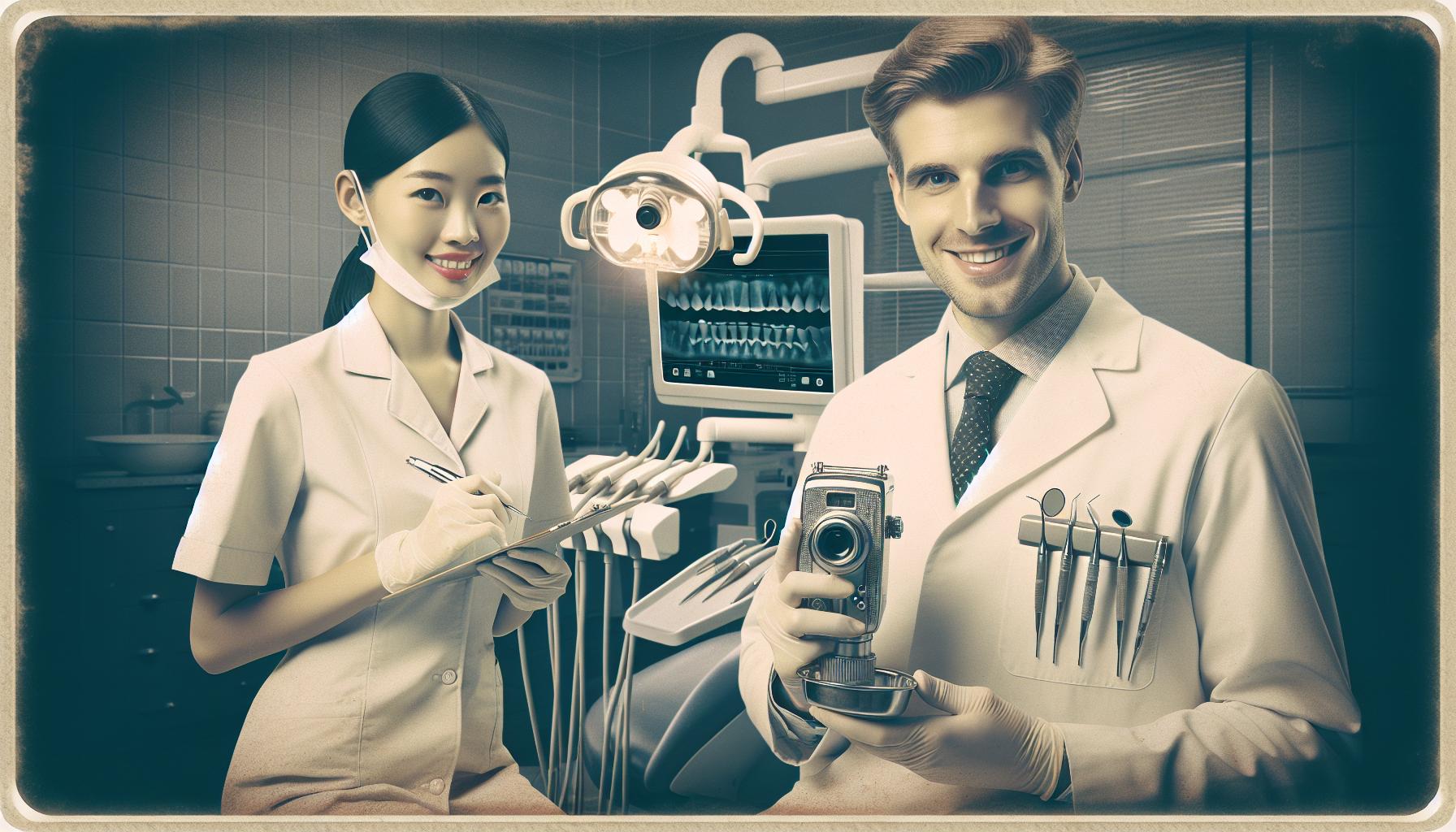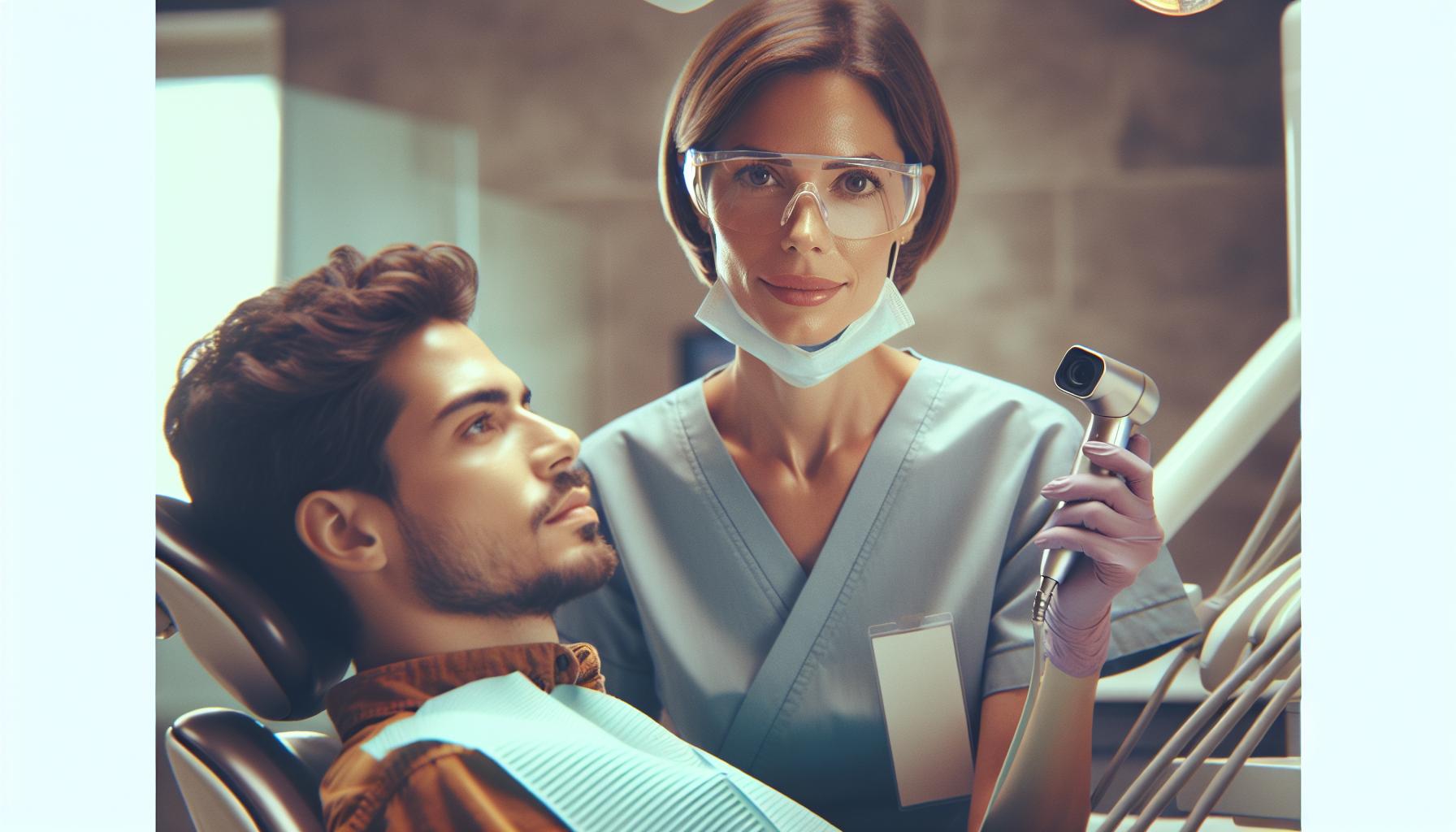Intraoral cameras have revolutionized dental practices, offering clear and detailed views of patients’ oral health. Tools like those from ProDENT are at the forefront of this innovation, enabling dentists to capture high-quality images that enhance communication and improve diagnostic accuracy. By effectively using these devices, dental professionals can better explain diagnoses and treatment plans, ensuring optimal patient engagement and care.
Understanding Intraoral Cameras
Intraoral cameras are small, handheld devices equipped with a light and a camera. They capture high-resolution images of the inside of a patient’s mouth. These images facilitate accurate diagnoses and enhance treatment planning.
Intraoral cameras enhance communication between dental professionals and patients. Clear visuals of dental issues like cavities or gum disease promote understanding. Patients can see what the dentist observes, aiding in informed decision-making.
The advantages of intraoral cameras extend to improved documentation. They provide a visual record of a patient’s dental conditions over time. This ability supports treatment progress tracking and patient education.
Using intraoral cameras involves straightforward steps. First, position the camera inside the mouth to capture images from different angles. Next, utilise the captured images to explain conditions and proposed treatments. Lastly, store images electronically for future reference and comparisons.
Intraoral cameras integrate seamlessly into dental practice workflows. They boost diagnostic accuracy and efficiency. By adopting this technology, dental professionals can enhance overall patient care and satisfaction.
Benefits Of Using Intraoral Cameras

Intraoral cameras offer numerous advantages in dental practices, enhancing the overall patient experience and improving clinical outcomes.
Improved Patient Communication
Intraoral cameras provide clear visual aids that help dentists explain diagnoses and treatment plans. Patients can see high-resolution images of their oral health conditions, such as cavities or gum disease. This clarity removes ambiguity and builds trust, as patients understand the issues affecting their teeth and gums. Visual evidence reinforces verbal explanations, leading to increased patient engagement and informed decision-making regarding their oral care.
Enhanced Diagnostic Accuracy
Intraoral cameras significantly improve diagnostic capabilities. They capture detailed images of hard-to-reach areas in the mouth, allowing dental professionals to identify issues that might not be visible during regular examinations. Enhanced visualisation aids in detecting early signs of oral diseases, ensuring timely intervention. Accurate imaging supports better treatment planning by providing a thorough understanding of a patient’s dental conditions over time, ultimately improving patient outcomes.
Step-By-Step Guide On How To Use Intraoral Camera
Using an intraoral camera effectively enhances dental examinations. Following a clear procedure ensures accurate imaging and improved patient communication.
Preparing The Patient
Preparing the patient for the intraoral camera involves simple steps. First, explain the procedure to the patient. This clarification helps alleviate anxiety. Next, ensure the patient is comfortable in the dental chair and provide a bib to protect their clothing. Finally, maintain proper lighting in the room to facilitate clearer images.
Operating The Camera
Operating the intraoral camera requires familiarity with the device. Turn on the camera before positioning it. Adjust the focal length for sharp images, ensuring to keep the camera steady during use. Utilise the control buttons to capture images seamlessly. Consider using an ergonomic grip, as this enhances control and comfort.
Capturing Images
Capturing images involves strategic positioning. Position the camera to view various angles, including occlusal and buccal aspects. Move gently within the mouth to avoid causing discomfort. Take multiple images of problem areas for thorough documentation. Ensure to capture images in good lighting to reveal details clearly.
Reviewing And Storing Images
Reviewing and storing images is crucial for effective dental records. Check the captured images for clarity and detail, discarding any blurry or unusable shots. Save the images electronically in the patient’s dental record system for easy access. Regularly updating these records helps in tracking progress over time.
Common Mistakes To Avoid
- Neglecting Equipment Maintenance
Regular maintenance ensures the intraoral camera functions properly. Failing to clean lenses or check batteries leads to poor image quality.
- Improper Patient Preparation
Not explaining the procedure can increase patient anxiety. Clear communication about the process enhances comfort and cooperation.
- Inadequate Image Capture Techniques
Capturing images without adjusting the focus results in unclear visuals. Always ensure the camera is at the correct angle and distance for optimal results.
- Overlooking Image Storage
Not effectively storing images can lead to lost records. Establish a systematic digital storage method to track patient progress.
- Ignoring Patient Feedback
Not asking for patient input during the procedure can hinder the comfort level. Engaging patients during the process ensures they feel at ease.
- Rushing Through Procedures
Speeding through camera usage prevents thorough examination. Taking time to check multiple angles improves diagnostic accuracy.
- Failing to Review Images
Skipping the review of captured images can lead to missed details. Always assess the images before concluding the examination.
- Not Integrating Images into Treatment Plans
Not using images in discussions about treatment options diminishes their effectiveness. Incorporating visuals helps patients understand their conditions better.
- Disregarding Lighting Conditions
Poor lighting can distort images and impede diagnosis. Ensure the area is well-lit to capture clear visuals of the oral cavity.
- Inconsistent Use of the Device
Not using the intraoral camera routinely limits its benefits. Making it a standard part of dental examinations promotes better patient outcomes.
Conclusion
Utilising intraoral cameras revolutionises dental practices by fostering enhanced communication and trust between dentists and patients. These devices not only improve diagnostic accuracy but also empower patients to understand their oral health better.
By integrating high-resolution images into treatment discussions, dentists can effectively illustrate conditions and proposed solutions. This visual approach not only aids in patient engagement but also strengthens the overall quality of care provided.
Embracing the practical tips and techniques outlined ensures optimal use of intraoral cameras, ultimately leading to improved patient satisfaction and treatment outcomes. As dental technology continues to evolve, the role of intraoral cameras will remain pivotal in delivering exceptional dental care.
Frequently Asked Questions
What are intraoral cameras?
Intraoral cameras are small, handheld devices used in dentistry to capture high-resolution images of the inside of a patient’s mouth. They are equipped with a light and camera, allowing dentists to obtain clear visual representations of oral health conditions like cavities or gum disease.
How do intraoral cameras improve patient communication?
Intraoral cameras enhance patient communication by providing clear visuals that help dentists explain diagnoses and treatment plans more effectively. When patients can see their dental issues, it fosters understanding, builds trust, and encourages informed decision-making regarding their care.
What are the benefits of using an intraoral camera?
The benefits of intraoral cameras include improved diagnostic accuracy, enhanced patient education, better documentation of dental conditions, and increased patient engagement. They enable early detection of oral diseases and support effective treatment planning through detailed imagery.
How can I use an intraoral camera effectively?
To use an intraoral camera effectively, ensure patient comfort and alleviate anxiety before capturing images. Adjust the focal length appropriately, position the camera from various angles, and review images thoroughly. Additionally, store images electronically for future reference.
What common mistakes should be avoided when using intraoral cameras?
Common mistakes to avoid include neglecting equipment maintenance, inadequate patient preparation, subpar image capture techniques, and failing to store images properly. Engaging with patients, reviewing images thoroughly, and using the device consistently are essential for maximising its benefits.
